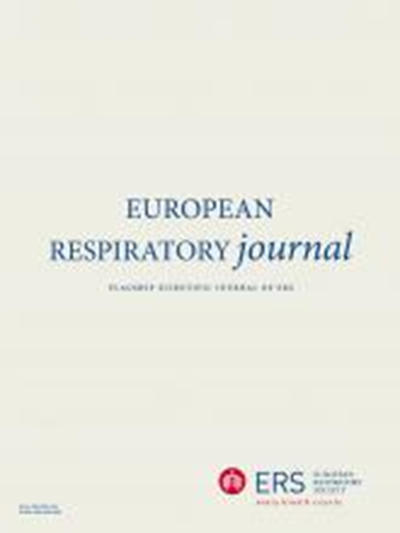超声弹性成像引导胸膜活检与传统胸部超声引导胸膜活检诊断胸腔积液:一项多中心随机试验。
IF 21
1区 医学
Q1 RESPIRATORY SYSTEM
引用次数: 0
摘要
传统的胸部超声引导胸膜活检(TUSPB)被认为是组织学诊断的初始方法;然而,它对恶性胸腔积液(MPE)的检测灵敏度有限。超声弹性成像可以通过评估胸膜硬度来区分MPE和良性疾病。本研究旨在探讨超声弹性成像引导胸膜活检(UEPB)对胸膜积液的诊断准确性是否优于TUSPB。方法在这项多中心随机试验(ClinicalTrials.gov ID: NCT05781659)中,招募了原因不明的胸腔积液患者,并随机(1:1)接受UEPB或TUSPB治疗。主要观察指标为UEPB诊断MPE的敏感性;次要结果为两种方法对不同胸膜厚度患者的诊断率及UEPB的安全性。结果:共纳入232例胸腔积液患者,其中228例纳入分析。UEPB组检测MPE的敏感性显著高于TUSPB组(85.00%[51/60]对63.16% [36/57],p=0.007)。UEPB组患者的诊断率明显高于TUSPB组(87.83%[101/115]对76.99% [87/113],p=0.032)。对于MPE且胸膜厚度≤5mm且无胸膜结节的患者,UEPB的敏感性明显高于TUSPB(80.49%[33/41]对50.00% [15/30],p=0.007)。UEPB组与TUSPB组手术相关并发症发生率相似(6.36% vs 8.33%, p=0.552)。解释:uepb在MPE诊断方面优于TUSPB,且具有相似的安全性。本文章由计算机程序翻译,如有差异,请以英文原文为准。
Ultrasonic Elastography-guided Pleural Biopsy versus Traditional Thoracic Ultrasound-guided Pleural Biopsy for the Diagnosis of Pleural Effusion: A Multicentre Randomized Trial.
BACKGROUND
Traditional thoracic ultrasound-guided pleural biopsy (TUSPB) is considered the initial method for histological diagnosis; however, its sensitivity for detecting malignant pleural effusion (MPE) is limited. Ultrasound elastography can be used to differentiate MPE from benign diseases by evaluating pleural stiffness. This study aimed to investigate whether ultrasonic elastography-guided pleural biopsy (UEPB) offers diagnostic accuracy superior to that of TUSPB for pleural effusions.
METHODS
In this multicentre, randomised trial (ClinicalTrials.gov ID: NCT05781659), patients with pleural effusion of unknown origin were enrolled and randomized (1:1) to undergo either UEPB or TUSPB. The primary outcome measured was the sensitivity of UEPB in diagnosing MPE; the secondary outcomes were the diagnostic rate of the two methods in patients with different pleural thicknesses, and the safety of UEPB.
FINDINGS
In total, 232 patients with pleural effusion were enrolled, 228 of whom were included in the analysis. The sensitivity for detecting MPE was significantly greater in the UEPB group than that in the TUSPB group (85.00% [51/60] versus 63.16% [36/57], p=0.007). Patients in the UEPB group had a significantly greater diagnostic yield than those in the TUSPB group did (87.83% [101/115] versus 76.99% [87/113], p=0.032). For patients with MPE and a pleural thickness ≤5 mm without who did not have pleural nodules, UEPB had a significantly greater sensitivity than did TUSPB (80.49% [33/41] versus 50.00% [15/30], p=0.007). The rates of procedure-related complications were similar between the UEPB and TUSPB groups (6.36% versus 8.33%, p=0.552).
INTERPRETATION
UEPB was superior to TUSPB in the diagnosis of MPE with a similar safety profile.
求助全文
通过发布文献求助,成功后即可免费获取论文全文。
去求助
来源期刊

European Respiratory Journal
医学-呼吸系统
CiteScore
27.50
自引率
3.30%
发文量
345
审稿时长
2-4 weeks
期刊介绍:
The European Respiratory Journal (ERJ) is the flagship journal of the European Respiratory Society. It has a current impact factor of 24.9. The journal covers various aspects of adult and paediatric respiratory medicine, including cell biology, epidemiology, immunology, oncology, pathophysiology, imaging, occupational medicine, intensive care, sleep medicine, and thoracic surgery. In addition to original research material, the ERJ publishes editorial commentaries, reviews, short research letters, and correspondence to the editor. The articles are published continuously and collected into 12 monthly issues in two volumes per year.
 求助内容:
求助内容: 应助结果提醒方式:
应助结果提醒方式:


